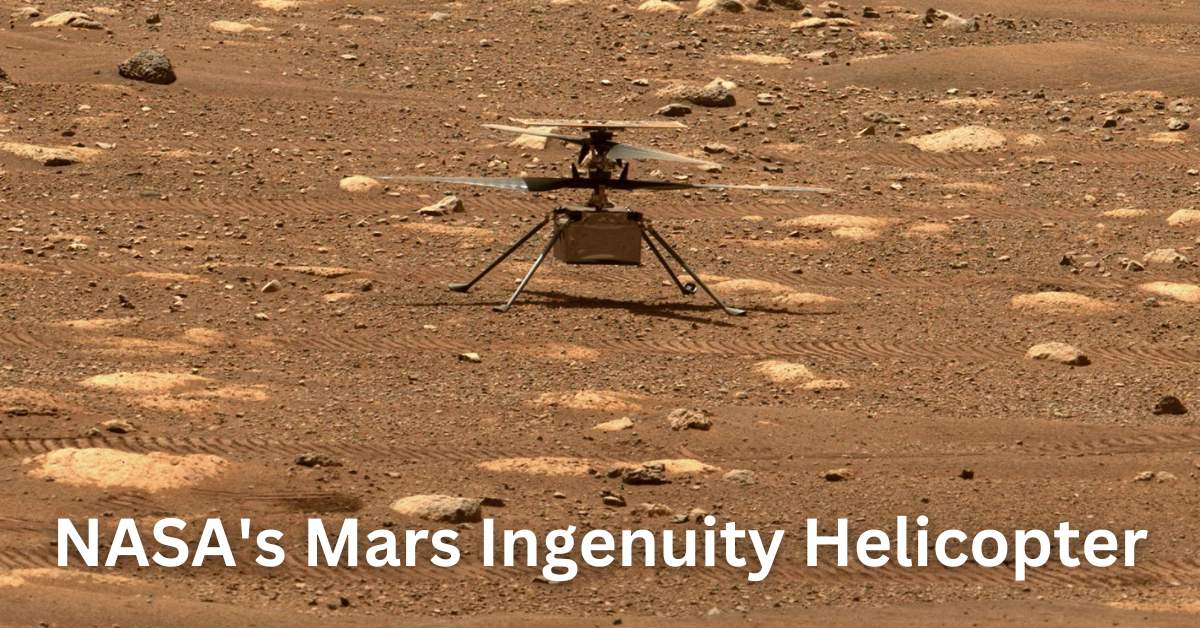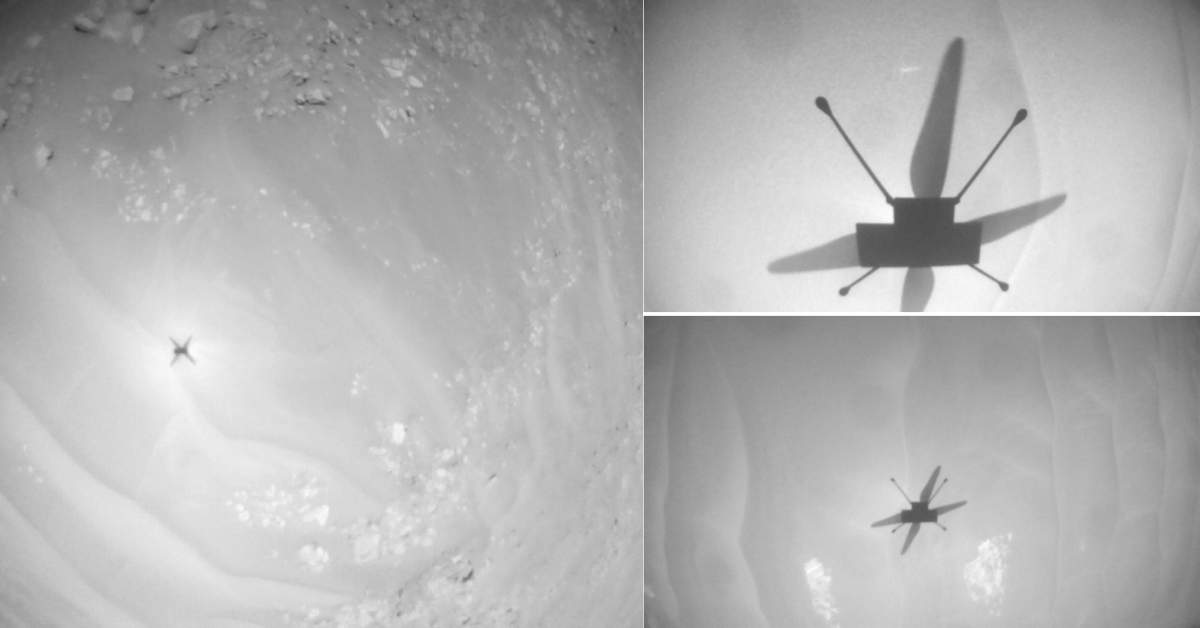Everyday life can make it easy to lose sight of the fact that a remarkable achievement in human engineering is being carried out above the dusty plains of Mars. NASA’s Ingenuity helicopter, a true marvel of technology, has been capturing the hearts and imaginations of space enthusiasts and dreamers alike as it explores the Martian landscape. It’s a story that reads like science fiction but is very much a reality.
Ingenuity wasn’t just designed to make a statement; it was engineered to make history. And it did just that by successfully completing its 64th flight in late October. That’s a remarkable achievement considering that engineers initially hoped it might only take to the Martian skies five times if it could get off the ground at all.
This experimental craft boasts four-foot-long rotor blades that spin at an astonishing 2,400 revolutions per minute. As it soared above the Martian desert, bathed in the bright sun overhead, Ingenuity cast intriguing shadows on the extraterrestrial ground. The resulting images are nothing short of science fiction come to life.
You may also be interested in reading some of our other articles on topics connected to space and technology:
- SpaceX Starlink Outage Caused by Expiring Certificates
- Elon Musk’s SpaceX Launches Next-Generation Starship Rocket: A Giant Step for Space Travel
But how does Ingenuity capture these mesmerizing shots of its interplanetary journey? The answer lies in its navigation camera, cleverly mounted in the helicopter’s fuselage and pointed directly downward to track the Martian terrain during flight. It’s a unique perspective that transports us to the Martian surface, giving us a glimpse of what it’s like to soar above an alien world.
Ingenuity’s mission extends beyond its awe-inspiring flights and photography. It’s a vital companion to NASA’s car-sized Perseverance rover, assisting in the quest to find signs of past primitive life on Mars. This search includes seeking telltale pieces of genetic material or remnants of degraded cells that might hint at the possibility of life’s existence.
As of now, there’s no conclusive evidence of life ever having existed on Mars or anywhere else beyond our blue planet. Nevertheless, these robotic explorers are committed to combing the Martian landscape, focusing on areas like dried-up rivers, streams, and ancient lakebeds, where life could have once thrived in the soils. Together, Ingenuity and Perseverance have set their sights on Mars’ Jezero Crater, a river delta that planetary scientists believe was once a watery haven.
But there’s more to the Martian story yet to be uncovered. One day, scientists may have the opportunity to peer deep below the Martian surface, a protected environment that may have hosted life for far longer than the harsh, dry, cold, and irradiated surface. The possibilities are endless, and the discoveries could be game-changing.
In a world where technological advances are accelerating at an astonishing pace, NASA’s achievements on Mars serve as a reminder of humanity’s insatiable curiosity and ambition. Who knows what secrets the Martian soil holds, or what otherworldly marvels we’ll uncover in the years to come?
And speaking of gazing into the cosmic void, space enthusiasts have another reason to celebrate. NASA has released the “Spot The Station” app, a digital tool that promises to enhance the experience of witnessing the International Space Station (ISS) streaking across the night sky. Available for free on both iOS and Android devices, this application builds upon the capabilities of NASA’s official “Spot the Station” website, offering a more interactive and informative platform for both casual stargazers and devoted NASA followers.
So, as we continue to be captivated by the exploits of NASA’s Mars helicopter, we can now turn our gaze towards the heavens with the “Spot The Station” app, making it easier than ever to catch a glimpse of the ISS on its celestial journey. Our journey into the cosmos is only just beginning, and every new discovery is a testament to human ingenuity, perseverance, and the endless quest for knowledge in this vast universe.

